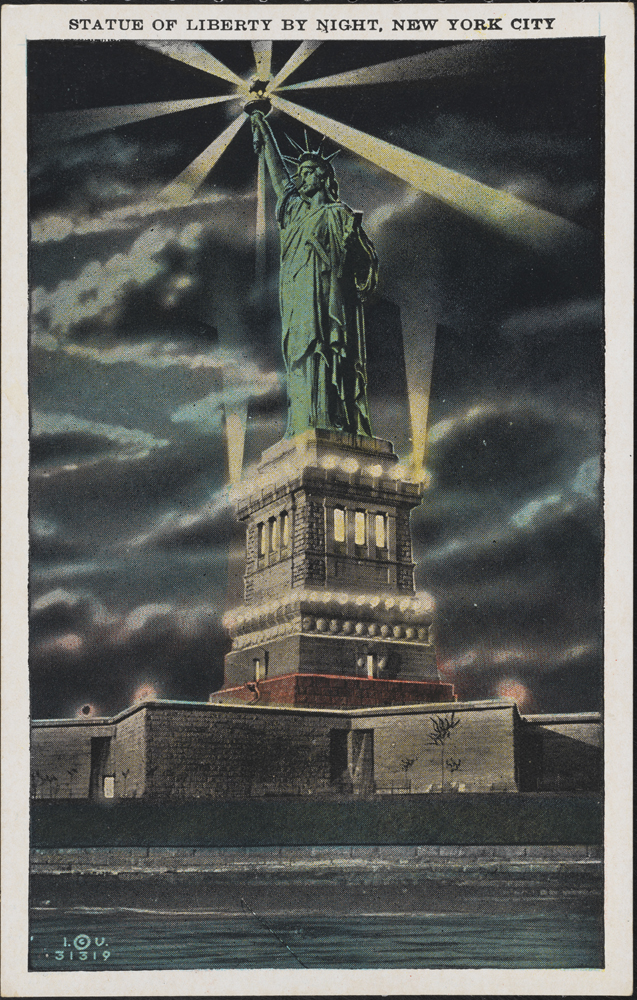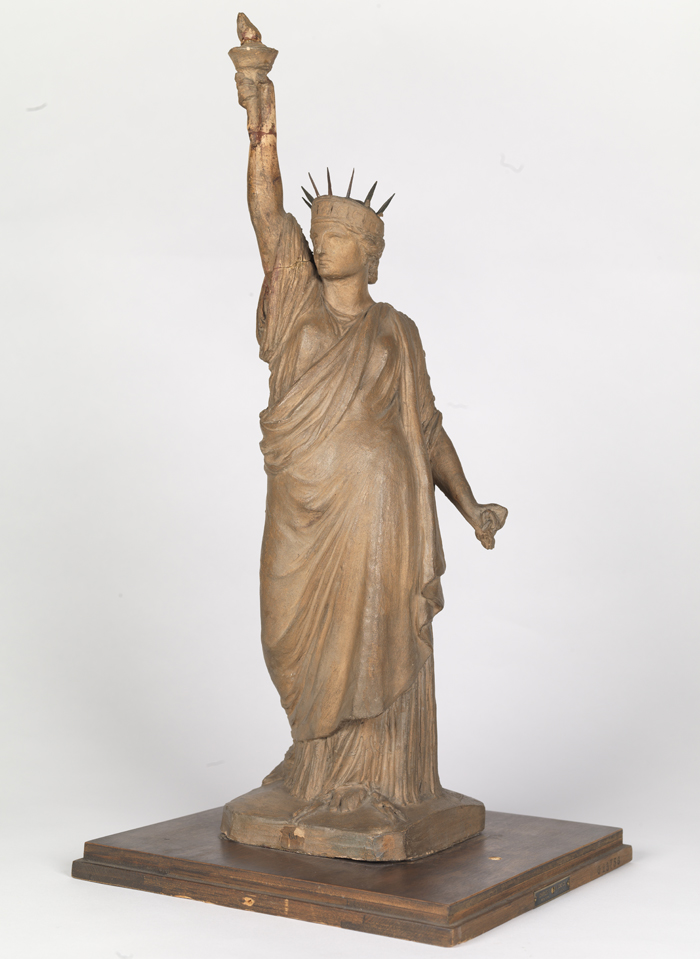Myths surrounding the origin of the Statue of Liberty
Tuesday, January 28, 2014 by
The Statue of Liberty, designed by Auguste Bartholdi (1834-1904), was a gift from France as a symbol of American freedom, and has watched over New York Harbor since its dedication on October 28, 1886. There have been many claims on the internet and elsewhere that the Statue of Liberty was originally intended to commemorate the end of slavery in the United States following the end of the Civil War, and that the model for the Statue was an African American woman.
Many sources suggest that the Museum of the City of New York can verify this information, and questions about the Statue’s origins remain among the Museum’s most frequently received inquiries. The Museum refers these researchers to the Statue of Liberty National Monument, the authority on the Statue. The National Parks Service, who cares for the Monument, has likewise been contacted with researchers seeking to verify these same claims, among others, and has posted a report on its website, addressing these rumors, and sharing their findings.
While the Museum can’t affirm or deny any of the claims about the Statue’s origins, we do our best to answer questions that involve the Museum’s collections. In this case, the Museum is lucky enough to have have two early maquettes, or a small preliminary models, similar to an artist’s sketch, by Auguste Bartholdi.
The sculpture above, accession number 42.421, is cast in bronze, and strongly resembles the Statue as we know it today, aside from the fact it measures just over 21 inches in height. The statue is signed and dated “Bartholdi 1875.” An additional inscription on the small sculpture reads “Washington, 31 August 1876, No 9939 C,” but the Museum does not have any information shedding light on the meaning of that inscription. The sculpture was a gift of Samuel T. Staines, Esquire, in 1934, but the gift paperwork does not document how Mr. Staines acquired the model.
The other sculpture, shown below, is made from terracotta, and perhaps holds some clues as to how the Museum became associated with the rumors concerning the Statue’s origins. The 19 3/8 inch maquette is estimated to have a date of ca. 1870. The terracotta sculpture was a gift of Estella Cameron Silo in memory of her husband, James Patrick Silo, in 1933, but again, the Museum does not have documentation regarding how Mr. Silo acquired the object.
This image above shows what may be a broken shackle in her hand, and the close up shows what appears to be chains coming out from the Statue’s robe. However, the Museum has no documentation to interpret the symbolism of these chains.
The Statue of Liberty National Monument’s report does make reference to a design similar to this one in “Claim 3,” but as you read on, you’ll see that even the “official” meaning of the statue has been interpreted in various ways over the years. We therefore leave it up to you to draw your own conclusions! The statue, like any sculpture, is a work of art, and can mean many different things to many different people.
Check out the Museum’s online Collections Portal for images of the Statue of Liberty, especially this one depicting her arm and torch on display in Madison Square Park while money was being raised to complete the statue.






